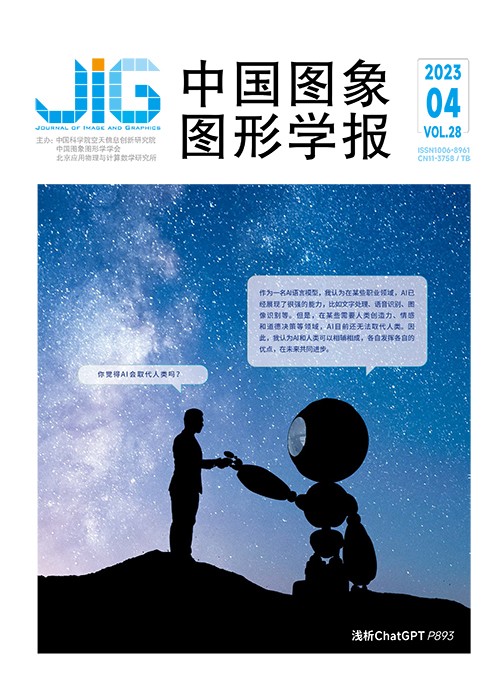
基于Bi-ConvLSTM时序特征提取的阿尔兹海默症预测CTISS模型
洪欣1,2, 黄铠沣1, 杨晨晖3(1.华侨大学计算机科学与技术学院, 厦门 361021;2.计算机视觉与机器学习福建省高校重点实验室, 厦门 361021;3.厦门大学信息学院, 厦门 361005) 摘 要
目的 阿尔兹海默症疾病的发展是一个缓慢的过程,患者在出现明显症状之后才开始用药,而这时患者的脑损伤已经过于严重难以恢复,阿尔兹海默症的早期预测能够尽早干预这一过程。目前2D及3D的卷积方法大多基于单次检测的磁共振成像(magnetic resonance imaging,MRI)影像进行特征提取,但是病程的发展预测更应该关注时序的特征。考虑到病例在疾病发展过程中的MRI检查时序能够为诊断提供疾病发展的影像变化的有效信息,本文建立CTISS(ConvLSTM based on temporal images series slice)模型,提取病程发展不同阶段的变化特征,实现阿尔兹海默症病病程的早期预测。方法 与现有算法通过一阶段MRI影像提取特征不同,该模型采用两阶段脑影像建立了一种分层时序卷积的网络结构,采用自适应学习率方法RMSprop(root mean square prop)训练模型。参数优化实验结果显示,2层卷积时序含注意力机制,1层长短时记忆含注意力机制的模型结构性能最好。算法采用时序卷积双向长短时记忆模型(bi-directional long short-term memory,Bi-ConvLSTM)及注意力机制,在大脑影像的分层切面上进行时序特征提取。结果 CTISS模型与现有的5种算法在4个分类任务进行对比。结果显示,CTISS模型在长序列阿尔兹海默症病程预测中取得很好的预测性能。CTISS模型能够捕捉与疾病发展过程相关的长时序影像特征,并获得更好的算法性能,特别在3分类任务中AUC(area under curve)较其他算法提升12%的精度。同时,CTISS模型其他深度模型所提取的全脑萎缩空腔增大、大脑白质区域纤维化的影像变化特征与阿尔兹海默症的病理解剖所获得的结论一致。结论 与其他算法相比,CTISS模型的AUC在3分类中取得较2分类更好的算法性能提升,因此CTISS模型在长期跟踪数据集上具有较其他算法更好的表现。
关键词
Temporal series features extraction based on Bi-ConvLSTM of Alzheimer’s disease pridiction CTISS model
Hong Xin1,2, Huang Kaifeng1, Yang Chenhui3(1.College of Computer Science and Technology, Huaqiao University, Xiamen 361021, China;2.Key Laboratory of Computer Vision and Machine Learning in Fujian Province, Xiamen 361021, China;3.School of Information, Xiamen University, Xiamen 361005, China) Abstract
Objective To realize the Alzheimer’s disease(AD)prediction,most of methods are focused on magnetic resonance imaging(MRI)image baseline of the patient. Current 2D and 3D convolutional neural networks(CNNs)are commonly used for MRI feature extraction. But,the challenge issue is required to learn temperal feature of the image changing although CNN deep models can be used on image feature selection. To extract the changing features and get the early prediction of Alzheimer’s disease effectively,we develop a ConvLSTM(convolution long short term memory)based on temporal images series slice(CTISS)model further. Method The CTISS model consist of 1)ConvLSTM and 2)Attention,which can extract spatio-temporal features from MRI and locate the disease relative spatial position of each. After slicing 3D MRI into 2D slices,the CTISS model can extract features from corresponding channels of the slices,one slice for each channel. Parameter optimization of the CTISS model shows that Attention-incorporated Conv2D layer is more efficient than the attention-intergrated bi-directional convolutional long short-term memory(Bi-ConvLSTM)layer. Sequential MRI images are split into slices-consistent,which are categorized into the corresponding channels. Each channel is fed with 2 serial slices. This model can use two stages of brain image beyond one-stage MRI. A network structure of hierarchical and sequential convolution is established,and root mean square prop(RMSprop)is used as the adaptive learning rate for training. To extract temporal features from brain image slices,our algorithm is constructed in terms of Bi-ConvLSTM model with Attention. Result The experiments are equipped with 4 Titan GPU,12 GB memory per GPU,selecting 691 patients,totally 1 765 samples in AD/MCI/NC classes,which have 751 AD,500 MCI and 514 NC. CTISS model is created by Keras2. 0 python library. First,MRI images are normalized into size 256×256×256. Second,each image is sliced into size 256×256 and grouped into time sequence according to the medical case ID. Finally,all those sequential slices are sent to 256 channels separately. Our CTISS model can capture long-term sequential image features related to the status of the disease,which is 0. 89 in AD vs NC,0. 81 in MCI vs NC,0. 72 in AD vs MCI and 0. 94 in AD vs MCI vs NC. Especially,the accuracy can be improved 12% in the 3-facets classification,which are 1)prediction performance, 2)feature extraction ability,and 3)comparative analysis with existing models. At the same time,the CTISS modelextracted image features like the cavity enlargement of the whole-brain atrophy and the regional fibrosis of the brain are consistent with the pathological anatomy of Alzheimer’s disease. Conclusion The AUC(area under curve)of CTISS model has its better optimization in 3 facets-classified than 2 facets-classified. The potentials of the CTISS model is linked to 2 aspects:1)its performance is stable in different size of classes;2)it achieves better AUC in long term series data for the sequential feature learning.
Keywords
Alzheimer’s disease(AD) prediction temporal sequential magnetic resonance imaging(MRI) features extraction long short term memory(LSTM)
|



 中国图象图形学报 │ 京ICP备05080539号-4 │ 本系统由
中国图象图形学报 │ 京ICP备05080539号-4 │ 本系统由